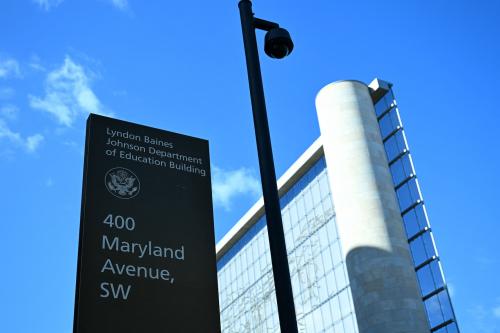Choosing just three books that might best explain the U.S. presidency as George W. Bush takes his second oath of office is a formidable if irresistible challenge.
We cannot expect much enlightenment from the self-serving memoirs of ex-presidents, as anyone who waited in line last year in Toronto to buy Bill Clinton’s big mess of a book should now be able to attest. The one former president — George H. W. Bush — who might have cast light on George W. Bush was the only modern president to resist writing a memoir.
There are often useful insights into how presidents operate in the recollections of former aides, of which my favourite are two from the presidency of Franklin Roosevelt — Samuel I. Rosenman’s Working with Roosevelt and Robert Sherwood’s Roosevelt and Hopkins — and two from Richard Nixon’s presidency — William Safire’s Before the Fall and Leonard Garment’s Crazy Rhythm.
Biography is the great mother lode of 20th-century presidential literature. There are magisterial works, though still in progress, by Edmund Morris on Theodore Roosevelt and by Robert Caro on Lyndon Johnson. Plus splendid one-volume biographies of Harry Truman (David McCullough), John Kennedy (Robert Dallek) and Ronald Reagan (Lou Cannon). It may be a long wait for the big Nixon book, because the release of his papers has been tied up in legal wrangling; in the meantime, I am fond of a study by Tom Wicker, One of Us: Richard Nixon and the American Dream. Biographies, however, are too singular for my list, which should be about the collective presidency.
So having now cleared the underbrush, it is time for the drum roll.
Book No. 1: Richard E. Neustadt, Presidential Power: The Politics of Leadership (John Wiley, various editions). Neustadt was a young professor at Columbia University when his book was published in 1960. He had also served on President Truman’s staff. I remember well the shock waves in the academy’s political science community caused by this slim volume, which seemed to reek of the real world of power politics. This was not the usual study of the presidency as Article II of the Constitution. Nor another Great Men as History tome. It was about how a president has to operate in a fragmented system of shared authority. It was about the “art” of leadership. It all had to do, in Neustadt’s presidential model, with “techniques” of persuasion.
Neustadt chose not to revise his book. Over time, his case studies — the Marshall Plan in 1947, the Korean War in 1950, Eisenhower sending troops to Little Rock — began to look a bit musty. The author’s solution was to keep adding essays to subsequent editions, as the nation added other presidents with other power problems. Readers should keep this in mind. For instance, the 1976 edition includes reflections on the troubled presidencies of Johnson and Nixon.
Book No. 2: Irving L. Janis’s Victims of Groupthink: A Psychological Study of Foreign-Policy Decisions and Fiascoes (Houghton Mifflin, 1972). Janis was a professor of psychology at Yale. His research involved psychological stress, much having to do with such personal decisions as dieting and giving up smoking. But after reading Arthur Schlesinger’s account of the Bay of Pigs, Janis was puzzled: “How could bright, shrewd men like John F. Kennedy and his advisers be taken in by the CIA’s stupid, patchwork plan?”
From this puzzlement, he developed the theory of “groupthink,” an explanation of the intense conformity pressures within groups making important foreign-policy decisions that limit the range of options considered, bias analysis of information and promote simplistic stereotypes
His 1972 book contained four prime examples of questionable decisions by presidents: Roosevelt (failure to be prepared for the attack on Pearl Harbor), Truman (invasion of North Korea), Kennedy (Bay of Pigs) and Johnson (escalation of Vietnam War). Janis died in 1990. Others will have to apply his theory to the current President Bush (invasion of Iraq and/or failure to be prepared for the overthrow of Saddam Hussein).
Book No. 3: Fred I. Greenstein, The Presidential Difference: Leadership Style from FDR to George W. Bush (Princeton University Press, 2004). Princeton professor Greenstein, best known for a brilliant 1982 study of Eisenhower’s leadership style, The Hidden-Hand Presidency, asks why presidents succeed or fail, in this popular account of the 12 most recent presidents. He measures them on six scales: public communication, organizational capacity, political skill, vision, cognitive style and emotional intelligence. What is necessary, Greenstein says, is a proper mix of these skills. George H. W. Bush did not have “the vision thing.” Political skills could not save Lyndon Johnson. Organizational skills did not do much for Jimmy Carter. Greenstein does not rate cognitive skills — Nixon’s, for example — at the top of what a president needs. Highest is emotional intelligence (or what I think of as “psychological wellness”).
The professor avoids academic jargon, has a breezy writing style, and even throws in an appendix filled with useful presidential information, including each president’s key appointments, election results and the political composition of Congress. If I were to assign just one short book on the modern presidency, this would be it.
The Brookings Institution is committed to quality, independence, and impact.
We are supported by a diverse array of funders. In line with our values and policies, each Brookings publication represents the sole views of its author(s).



Commentary
Top gun: biographies that best explain the U.S. presidency
January 15, 2005